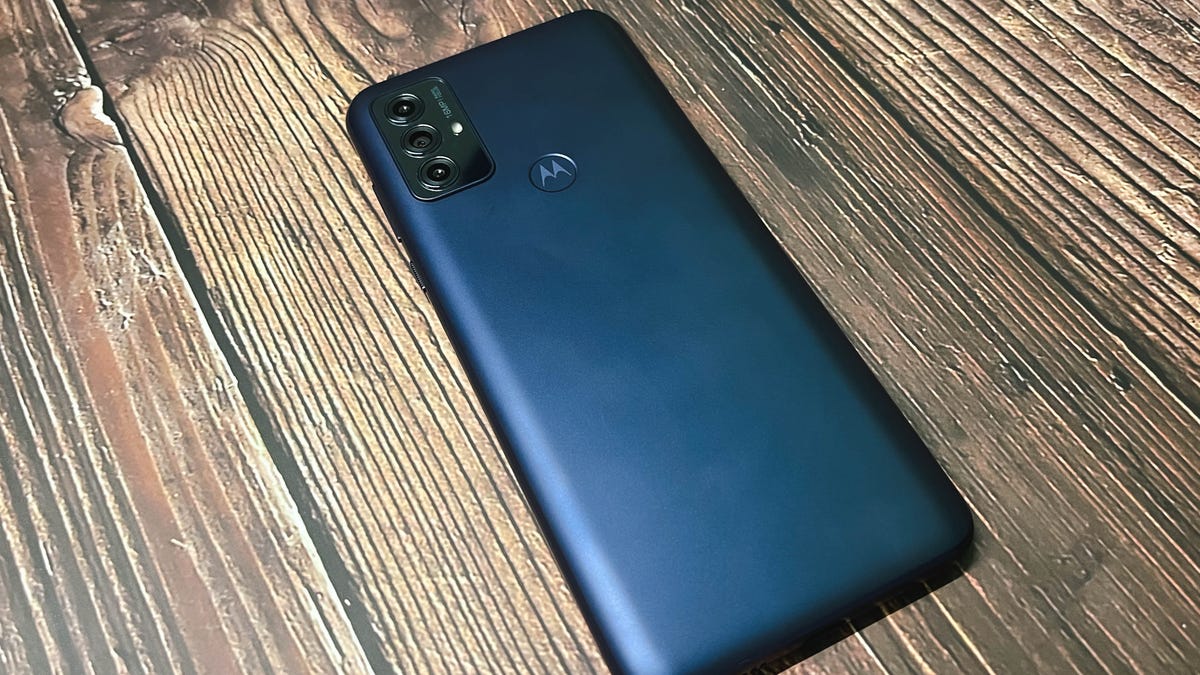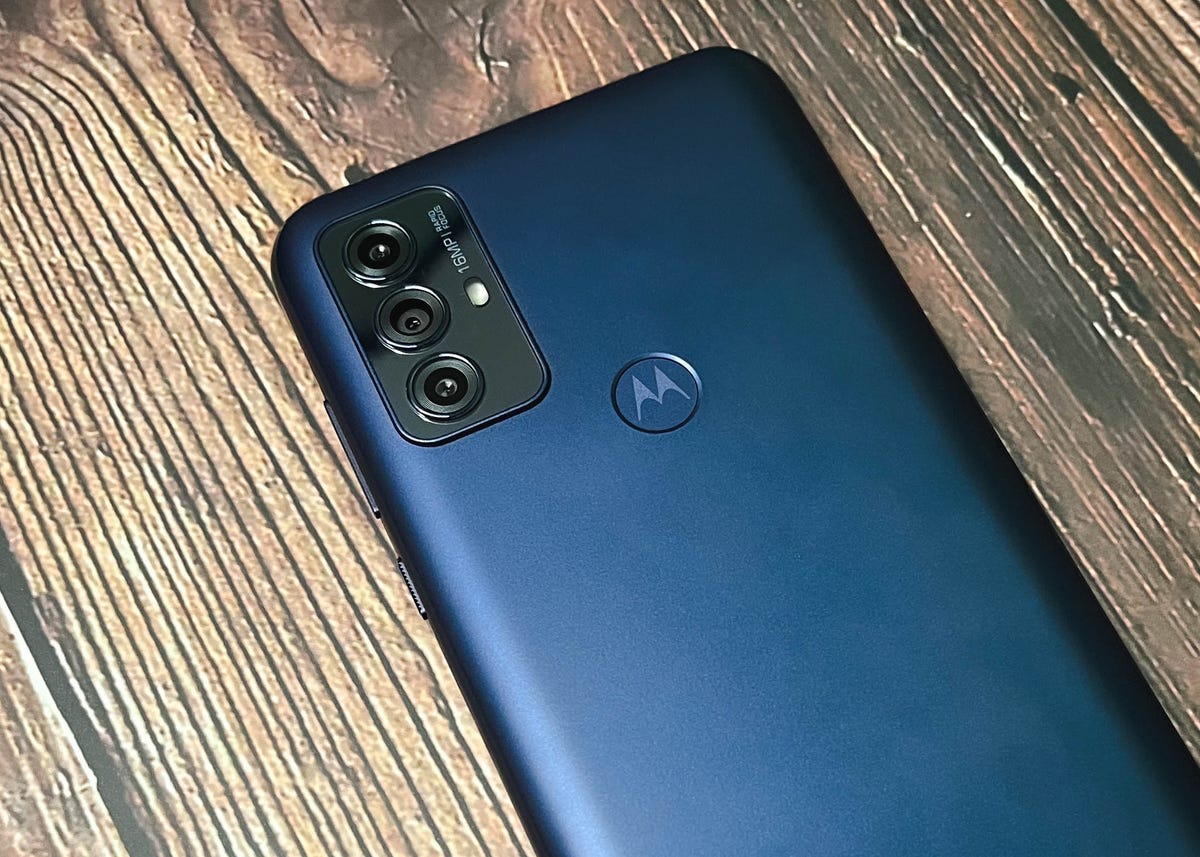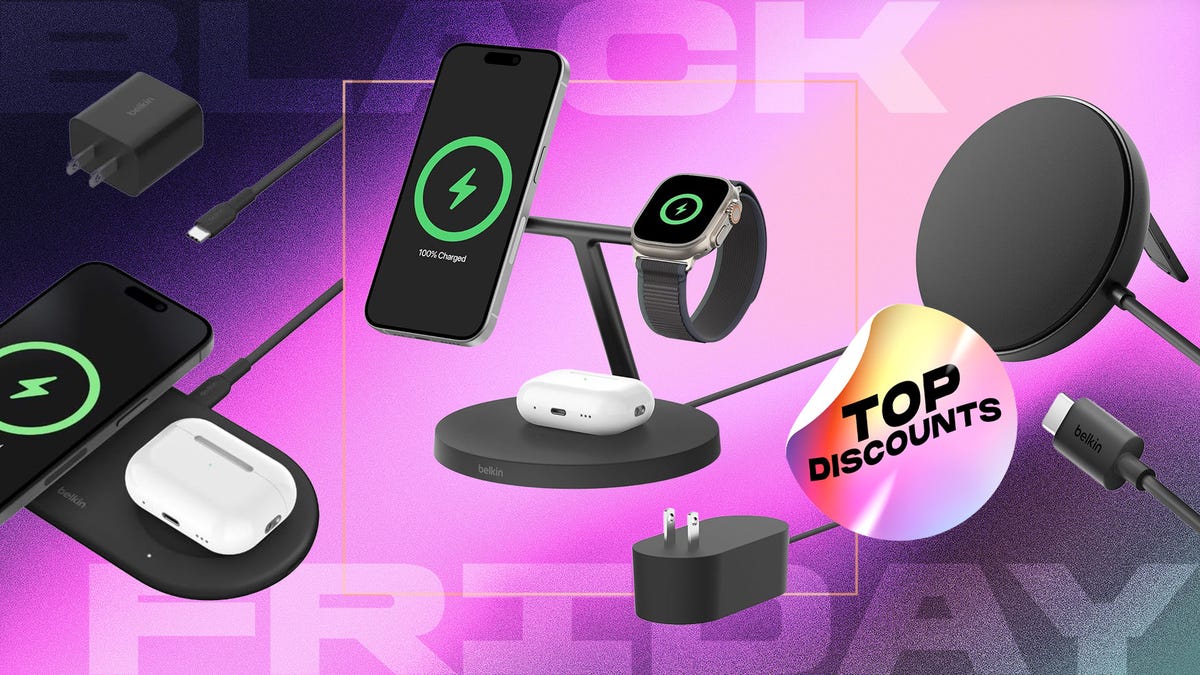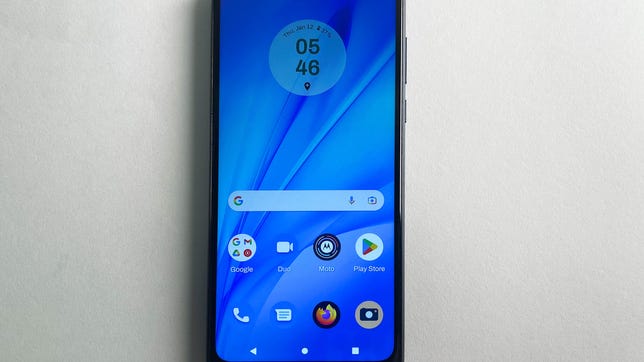Technologies
Moto G Play (2023) Review: Low Price, Lots of Compromises
The essentials-only Motorola phone cuts to the bone in order to hit its $170 price.

The Moto G Play for 2023 costs $170 (or even less at Amazon), making it one of the cheapest new phones you can get right now, and without the bloatware or wireless carrier restrictions we sometimes see on lower-priced devices. With a decent set of specs for the price — including a triple camera system with a 16-megapixel main camera, a 6.5-inch display with a 90Hz refresh rate and a 5,000-mAh battery that provides nearly three days of battery life — this should have been an attractive option for anyone looking for a decent, no-frills phone.
However, this phone has a number of performance issues that make it frustrating to use. And on top of that, Motorola chose to drop one of its best Moto gestures: twisting the phone to quickly open its camera. While some might consider these gestures a gimmick, they have been a signature element of Motorola’s phones for nearly a decade. Other gestures like «chop to turn on flashlight» are still here, making the absence of the camera gesture even more glaring.
Despite these important drawbacks, the 2023 Moto G Play does have some positive attributes. The battery life is great, the software is a fairly clean version of Android 12 and you’ll find rare ports like a headphone jack and microSD card slot for storage expansion. But the phone will only get one major software update to Android 13, which is less than I’d like to see but typical for this price range, as well as three years of security updates.
Yet every perk I list comes with another problem, which is important to consider if you’re tempted by the Moto G Play because of its low price.
Like
- Long battery life
- Clean version of Android 12
- Three years of security updates
Don’t Like
- Frequent lag, issues loading software
- Questionable refresh rate
- No «twist to open camera» gesture
Moto G Play design and performance
The Moto G Play looks nice for a phone that costs just $170. The Navy Blue color of its plastic body provides a hint of personality, while the phone’s low-resolution 720p display includes a screen cutout for the 5-megapixel front-facing camera. The fingerprint sensor is located in my favorite spot on an Android phone — the back.
But the problems begin once you start using the phone. The phone’s MediaTek Helio G37 processor and 3GB of RAM weren’t powerful enough to juggle multiple apps easily. In some cases, it wouldn’t even load certain apps. This was particularly bizarre considering it loaded a 3D game like Crazy Taxi (admittedly an oldie but still a goodie), but couldn’t run other modern 2D games like Exploding Kittens. With the phone’s tiny 32GB of storage, I’m lucky to even fit a couple games onto the Moto G Play, although there is a microSD card slot for storage expansion.
Geekbench V.5.0 single-core
Note:
Longer bars indicate better performance
Geekbench V.5.0 multicore
Note:
Longer bars indicate better performance
Email, news and video-streaming apps fared better in terms of performance, but not by much. Even though the Moto G Play touts a 90Hz refresh rate, which should smooth out animations, there is a lot of noticeable lag. I couldn’t even tell when the refresh rate reached 90Hz. The Settings menu lets you choose between «Auto» and «60 Hz,» with the former dynamically changing the refresh rate based on what you are doing. Having an auto setting does make sense, but a lot of the cheaper Android phones I’ve used also include the option to set the phone to a consistent 90Hz, alongside a 60Hz option for preserving battery life.
This brings me back to the phone’s 5,000-mAh battery — a bright spot considering it easily lasted two days on a full charge during my testing. I think it’s possible for the battery to make it to a third day, mostly because of how underpowered this device is. I typically got around three hours of screen time per day on the device during my testing, which included streaming, shooting photos and trying to play games for this review.
During a more active session on the phone, in which I streamed 22 minutes of a TV show at 100% brightness and then took a 24-minute video call, the battery dropped from 59% to 46%. On less active days, in which the phone was used primarily for listening to music while commuting, reading news articles and light texting, I could end the day with just over 50% remaining.
Charging times for the phone are generally less impressive than battery life. With the included 10-watt charger, it typically took just over an hour to charge from zero to 50%. Getting to 100% would take just over 2 hours, 30 minutes. When I tested charging speeds with my 18-watt charger, the results were slightly faster. The phone would get from zero to 66% after an hour and finish charging just past the two-hour mark.


The Moto G Play has three cameras, anchored by a 16-megapixel main camera.
Mike Sorrentino/CNETMoto G Play cameras
The Moto G Play has a triple-camera system anchored by a main 16-megapixel camera, which is accompanied by a 2-megapixel macro camera and a 2-megapixel depth sensor. But photos are consistently fuzzy, whether I took them indoors, outdoors, in bright environments or in the dark.


A foggy day in New York, taken on the Moto G Play.
Mike Sorrentino/CNETWhile it was nice to see Portrait mode on a phone at this price, I can barely see much of a bokeh effect in my photos. This is especially true when using the 5-megapixel front-facing camera, in which my photos looked consistently muddy.


My friend took a photo of me at the Taco Bell in Times Square using Portrait Mode, but it’s challenging to see if it made a difference.
Mike Sorrentino/CNET

The Moto G Play’s front-facing camera had a tough time keeping me in focus, even in a restaurant with decent lighting.
Mike Sorrentino/CNETI took the Moto G Play with me to Taco Bell — because yes, I’m going to go eat cheap food while reviewing a cheap phone. I had my friend take photos of me using the phone’s Portrait setting. You can sort of see a light blurring effect in the background, but it’s hard to perceive.
In another selfie taken at a restaurant with better lighting than the Taco Bell, I found the selfie camera to have a tough time keeping me in focus.
And when taking photos of my friend’s dog Daisy, the rear cameras struggled to capture much detail of her fur, even when she sat still. In the best of conditions, the phone’s cameras struggle to take sharp photos.


Daisy the dog sat relatively still for this photo, but the Moto G Play’s camera captures minimal detail.
Mike Sorrentino/CNETI compared the photos taken on the Moto G Play against the same images taken on the $160 Samsung Galaxy A03S, and found the picture quality to be roughly comparable for simple static shots. When shooting a bookshelf at CNET’s office, the Moto G Play got slightly more detail of the book covers than the Galaxy A03S, with the latter phone’s image appearing a bit darker.
However, when it comes to a photo with lots of detail and color, such as with this plant wall, the Moto G Play struggles to discern between the different shades of green. Meanwhile the Galaxy A03S performs much better with discerning the darker green shades from the lighter ones, making for a dramatically different photo.
Neither phone’s camera performs especially well, which is a common theme among phones that cost under $200. For me, this places the Moto G Play’s camera photos squarely into the category of being acceptable for group chats, but not much else. It’s going to take a lot of really good lighting and steady hands in order to make the most of these cameras, and that’s more effort than most people are going to want to make.
There are better options, even when you want to save money
Even when you’re looking for the cheapest possible phone, your device still needs to run most apps without issue and take decent-looking photos. I wouldn’t expect a phone that costs less than $200 to run Fortnite at the highest graphics settings, but I am expecting to use apps with minimal lag. While phones at this price are also typically lighter on features, the perks that are available should bring noticeable value to the experience. The Moto G Play’s Portrait mode and high refresh rate don’t succeed in this regard.
Instead of buying the Moto G Play at $170, you’re probably better off saving $10 and getting the $160 Samsung Galaxy A03S. While that phone also has unimpressive cameras, it was at least able to multitask more easily.
Although I haven’t reviewed it yet, you might also consider the $199 Samsung Galaxy A14 5G, since it has 64GB of storage and 5G connectivity. Later this year, a number of TCL 40 phones will arrive in the US, which will include 5G and 128GB of storage for under $200. Those devices might be worth waiting for if you aren’t in dire need of a cheap phone right now.
Moto G Play (2023) vs. Samsung Galaxy A03S, TCL Stylus 5G, OnePlus Nord N300 5G
| Moto G Play (2023) | Samsung Galaxy A03S | TCL Stylus 5G | OnePlus Nord N300 5G | |
|---|---|---|---|---|
| Display size, type resolution, refresh rate | 6.5-inch IPS TFT LCD; 1,600×720 pixels; 90Hz refresh rate | 6.5-inch LCD; 1,600×720 pixels | 6.81-inch; 2,400×1,080 pixels | 6.56-inch IPS LCD display; 720p resolution; 90Hz refresh rate |
| Pixel density | 269ppi | 269ppi | 395ppi | 269ppi |
| Dimensions (inches) | 6.58 x 2.95 x 0.36 in | 6.5 x 2.9 x 0.3 in | 6.67 x 3.01 x 0.35 in | 6.4 x 2.9 x 0.3 in |
| Dimensions (millimeters) | 167 x 77 x 9.4 mm | 165.8 x 75.9 x 9.1 mm | 169.6 x 76.5 x 8.9 mm | 163.8 x 75.1 x 7.99 mm |
| Weight (ounces, grams) | 203 g (7.16 oz) | 202g (7.13 oz) | 213g (7.51 oz) | 190g (6.7 oz) |
| Mobile software | Android 12 | Android 11 | Android 12 | Android 12 |
| Camera | 16-megapixel (main), 2-megapixel (macro), 2-megapixel (depth sensor) | 13-megapixel (main), 2-megapixel (depth), 2-megapixel (macro) | 50-megapixel (main), 5-megapixel (wide), 2-megapixel (macro), 2-megapixel (depth sensor) | 48-megapixel (main), 2-megapixel (depth lens) |
| Front-facing camera | 5-megapixel | 5-megapixel | 13-megapixel | 16-megapixel |
| Video capture | 720p at 30 fps | 1080p at 30fps | 1080p at 30fps | 1080p at 30fps |
| Processor | MediaTek Helio G37 | Octa-core processor | MediaTek Dimensity 700 5G | MediaTek Dimensity 810 |
| RAM, storage | 3GB + 32GB | 3GB/32GB | 4GB/128GB | 4GB/64GB |
| Expandable storage | Up to 512GB | Up to 1TB | Up to 2TB | Up to 1TB |
| Battery, charger | 5,000 mAh; 10W charging | 5,000mAh; charger not included, does not support wireless charging | 4,000mAh; 18W charging | 5,000mAh; 33W charging |
| Fingerprint sensor | Rear | Side | Side | Side |
| Connector | USB-C | USB-C | USB-C | USB-C |
| Headphone jack | Yes | Yes | Yes | Yes |
| Special features | 3-day battery life, Moto Gestures, Auto Smile Capture, Portait Mode | Stylus with built-in storage, producitivity software, NxtVision HDR mode | Dual speakers, NFC, Face Unlock, HDR, Portrait, Face retouching | |
| Price off-contract (USD) | $170 | $160 | $258 | $228 |
Technologies
Adorn Your Wrist With a 45mm Pixel Watch 3 for Just $200 This Black Friday
Both Amazon and Walmart are selling Google’s Pixel Watch 3 for just $200, but for how long?
There are tons of reasons to pick up a new smartwatch, not the least of which is monitoring your health and tracking your fitness goals. If you’re in the Android world, there are plenty of options to choose from right now. The Pixel Watch 3 is a solid choice, and it was our favorite Android smartwatch until the new Pixel Watch 4 took its place in the lineup. But the Watch 3 still boasts some great features that can help you stay on top of your wellness goals into the new year as well. And both Amazon and Walmart are running Black Friday deals that make it significantly cheaper than the Pixel Watch 4.
Both retailers are selling the bigger 45mm model with a solid $100 discount, so you can pick one up for just $200. That’s $100 less than the Pixel Watch 4’s Black Friday price. Again, this offer is available at both Walmart and Amazon, so take your pick as to where you place your order. Just do it soon because we don’t know how long these Black Friday deals will last.
The impressive watch was previously our top Android smartwatch because of its attractive design, large screen and speedy charging. It no longer requires a Fitbit Premium membership to access your readiness score, and it has plenty of great tools for runners. However, although the watch comes with Google Assistant, it doesn’t include Gemini, Google’s AI.
Lisa Eadicicco, a former senior editor, said in her CNET review, «The Pixel Watch 3’s upgrades are enough to keep it as my top pick for a general-purpose Android smartwatch. If you’re anything like me and consider yourself a casual runner in need of a general-purpose Android watch that’s sleek and comfortable, the Pixel Watch 3 won’t disappoint.»
If this isn’t the Pixel Watch for you, take a look at our full roundup on the best Pixel Watch deals going on right now.
SMARTWATCH DEALS OF THE WEEK
-
$339 (save $60)
-
$280 (save $70)
-
$300 (save $50)
-
$150 (save $100)
-
$49 (save $30)
Why this deal matters
Google Watches don’t go on sale often. These rare discounts on the Pixel Watch 3 are thanks to the release of the Pixel Watch 4 earlier this year. This deal drops the 45mm model to just $200 — a new all-time low, and a strong value for one of the most versatile Android smartwatches available.
Don’t miss any of our unbiased tech content and lab-based reviews. Add CNET as a preferred Google source.
Join Our Daily Deals Text Group!
Get hand-picked deals from CNET shopping experts straight to your phone.
By signing up, you confirm you are 16+ and agree to receive recurring marketing messages at the phone number provided. Consent is not a condition of purchase. Reply STOP to unsubscribe. Msg & data rates may apply. View our Privacy Policy and Terms of Use.
Technologies
I Regularly Buy Belkin Gear at Full Price, but You Can Save Up to 63% for Black Friday
Belkin makes excellent mobile accessories, from cables to wireless charging stands. Snag some of our favorites for less this Black Friday.

You can never have too many charging options, especially when you can stock up during an epic sale. We’re just hours away from Black Friday, and Belkin is offering up to 65% off its mobile accessories at Amazon. Belkin regularly shows up in our best lists, including our roundup of top wireless chargers.
The brand makes excellent gear at reasonable prices, and those prices just got even lower. Whether you’re looking for a charging station for your nightstand or a sleek power bank for travel days, there’s a Belkin Black Friday deal for you.
The Belkin MagSafe three-in-one wireless charging stand landed on our list of best wireless chargers for its impressive fast-charging performance. Our expert, David Carnoy, praised the stand’s convenient design and its ability to fast charge Apple’s entire ecosystem. That means you’ll be able to charge your iPhone, Apple Watch and any AirPods with a wireless charging case — all at once. Carnoy’s only complaint was the price; however, it’s substantially discounted for Black Friday. Belkin’s MagSafe three-in-one wireless charging stand is now just $78 — 35% off the usual $120 price.
If you spend a lot of time in your car, be it a long commute or regular road trips, a good car mount is a must. The Belkin MagSafe car mount is another one of our favorite accessories. The magnets provide a strong, secure hold for your phone, and you can rotate it for easy access. The mount plus charger is currently available for $55, down from $80.
Speaking of road trips, if you’re traveling this holiday season, you definitely need a portable power bank. Belkin has a 10,000 mAh power bank with a built-in USB-C power delivery cable for $15. This 20-watt charger typically retails for $40, so you’re saving 63%. There are four colors, but this price only applies to the black model. Other colors are available for $30.
If you’ve got a Nintendo Switch 2 or you’re gifting it to a loved one, you’ll love Belkin’s Switch 2 travel case. It’s lightweight with a hard shell and has storage pockets for up to 12 game cards. Snag one right now for $22. Just make sure you click the on-page coupon to get the full discount.
Belkin also has huge discounts on headphones and earbuds if those are on your gift list this year.
Why this deal matters
Phone accessories, including chargers and earbuds, can wear quickly and are easy to lose. Third-party retailers like Belkin offer a solid selection of mobile accessories for all budgets. This Black Friday deal makes now an excellent time to shop with up to 63% off top-rated charging stations, car mounts and even headphones.
Join Our Daily Deals Text Group!
Get hand-picked deals from CNET shopping experts straight to your phone.
By signing up, you confirm you are 16+ and agree to receive recurring marketing messages at the phone number provided. Consent is not a condition of purchase. Reply STOP to unsubscribe. Msg & data rates may apply. View our Privacy Policy and Terms of Use.
Technologies
The Black Friday Gaming Deals You Want Are Already Here, Including PlayStation, Xbox and Alienware
-

 Technologies3 года ago
Technologies3 года agoTech Companies Need to Be Held Accountable for Security, Experts Say
-

 Technologies3 года ago
Technologies3 года agoBest Handheld Game Console in 2023
-

 Technologies3 года ago
Technologies3 года agoTighten Up Your VR Game With the Best Head Straps for Quest 2
-

 Technologies4 года ago
Technologies4 года agoBlack Friday 2021: The best deals on TVs, headphones, kitchenware, and more
-

 Technologies4 года ago
Technologies4 года agoVerum, Wickr and Threema: next generation secured messengers
-

 Technologies4 года ago
Technologies4 года agoGoogle to require vaccinations as Silicon Valley rethinks return-to-office policies
-

 Technologies4 года ago
Technologies4 года agoOlivia Harlan Dekker for Verum Messenger
-

 Technologies4 года ago
Technologies4 года agoiPhone 13 event: How to watch Apple’s big announcement tomorrow

